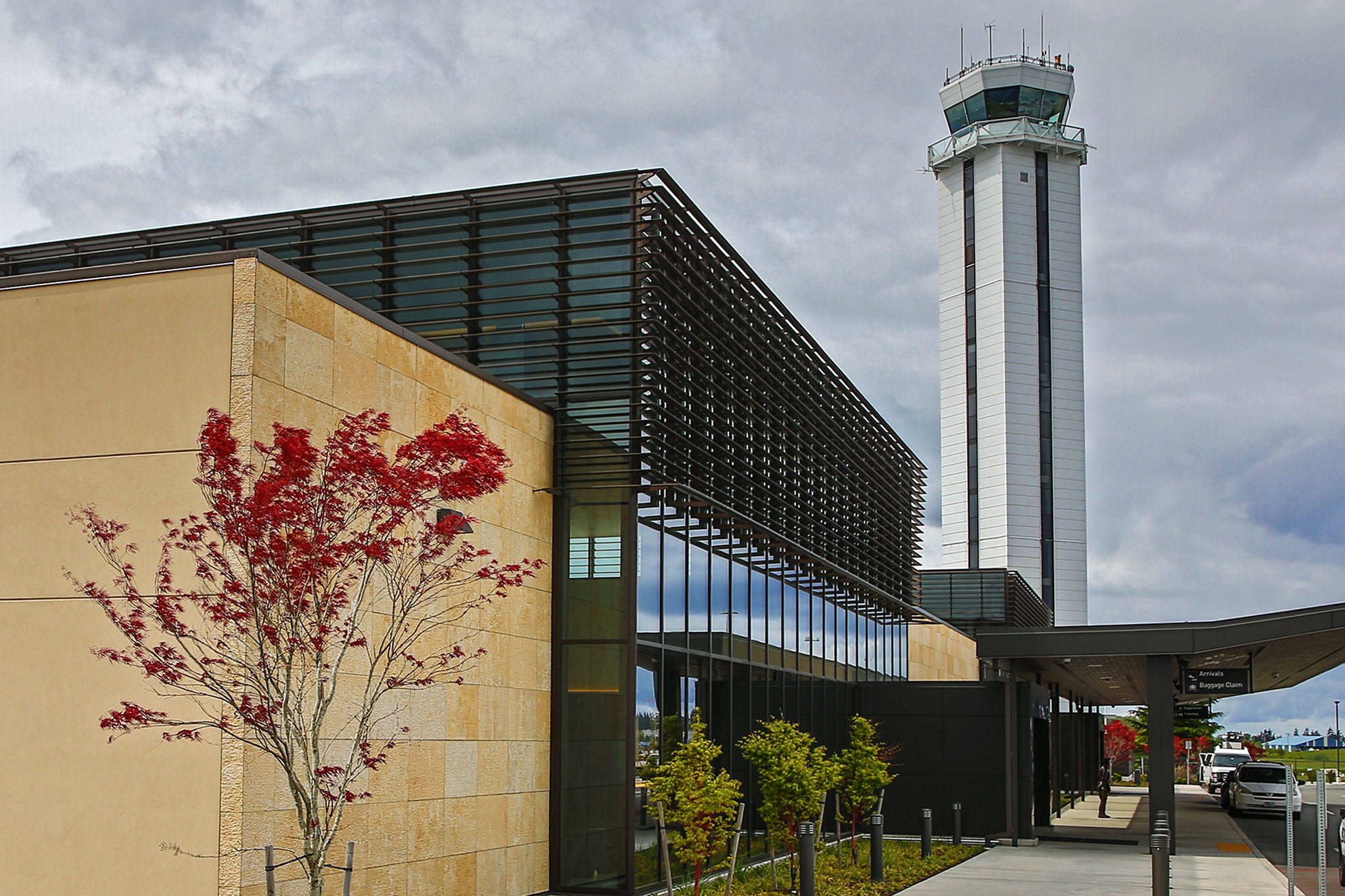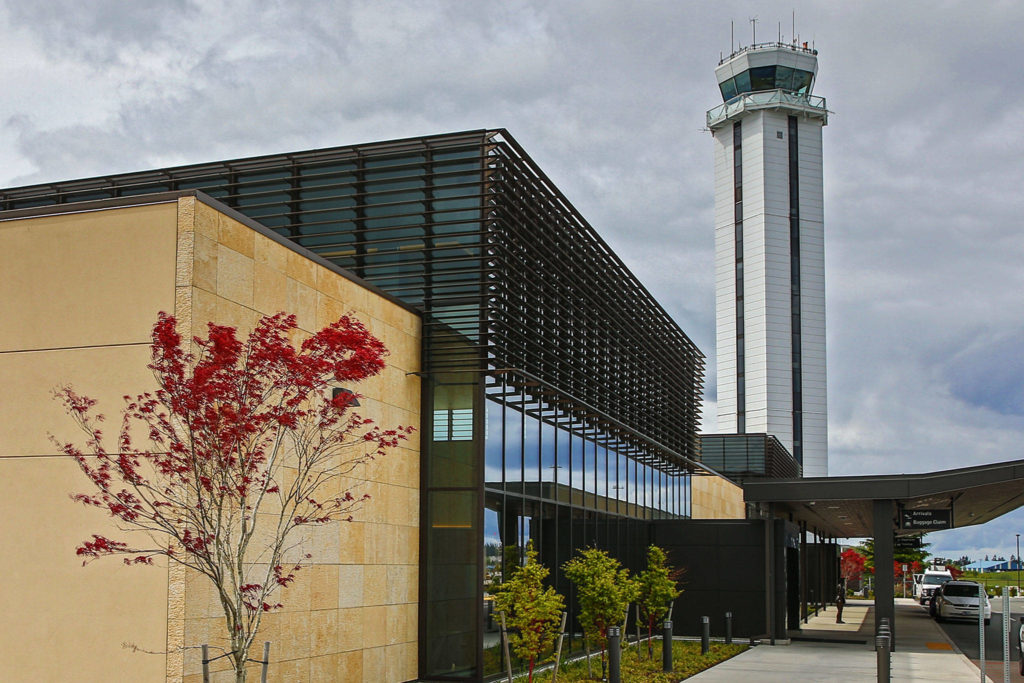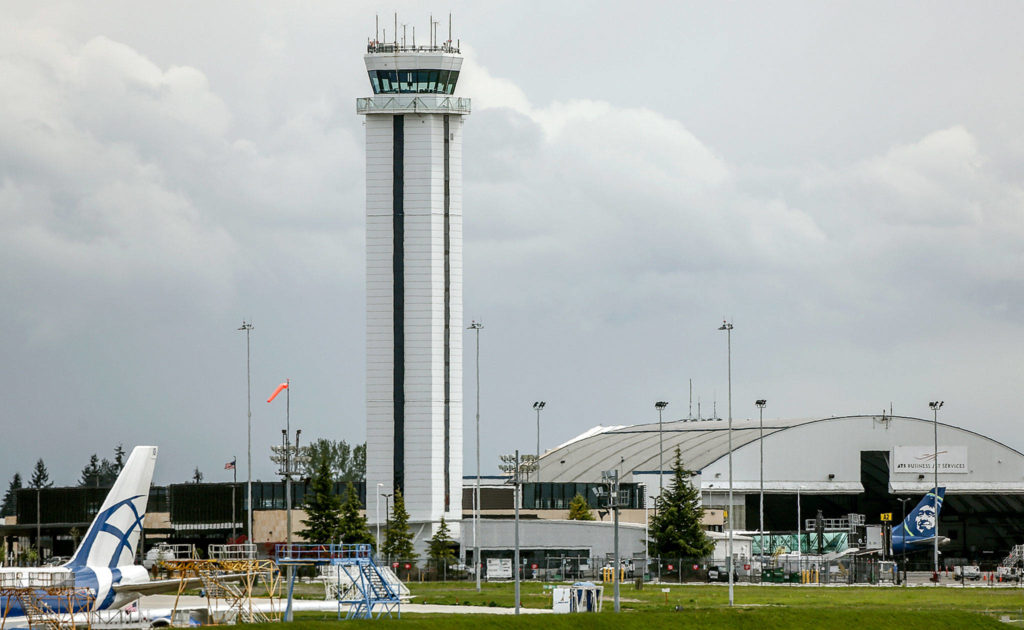EVERETT — While a technicality resulted in Paine Field getting a meager $157,000 in federal COVID-19 bailout money last month, there’s more to the story.
Some much smaller airports in Washington and elsewhere got an additional $17.5 million each.
How and why that happened is unclear.
Still, Airport Director Arif Ghouse hopes Paine Field will see a second round of emergency COVID-19 funding.
The Snohomish County-owned airport received $157,000 in government aid in April from the Coronavirus Aid, Relief and Economic Security (CARES) Act, a stimulus program that included money for airports. In all, the program distributed $10 billion to 3,000 air fields, including $310 million to 62 airports in Washington.
But the grant for Paine was far less than those awarded to similar-sized airports across the state. Bellingham International Airport, for example, received $5 million.
There was a glitch, Ghouse said.
Paine Field’s grant was based on an outdated classification: “They still had us registered as a general aviation airport,” Ghouse said of the Federal Aviation Administration. “General aviation” is an industry term that refers to flying unrelated to scheduled passenger or cargo service.
Paine Field does have a good deal of general aviation activity, but airline service from the Everett airport launched in March 2019.
In its first year, more than a million passengers passed through the new two-gate Everett terminal. Based on that tally, Paine Field expected to receive about $3 or $4 per passenger in emergency aid, or $3 million to $4 million dollars, Ghouse said.
Since the allocation, county officials have made it known to lawmakers that the $157,000 grant can’t support Paine’s new role as a commercial airport. “That’s an important part of our makeup, and that wasn’t reflected in the grant amount,” Ghouse said.
Lawmakers, including U.S. Sen. Patty Murray, are trying to figure out the best way to make Paine Field whole. Said Murray, in an email to The Daily Herald: “I’m doing everything I can to make this right and ensure it isn’t left out of future federal response efforts.”
A $17.5 million error?
Paine Field isn’t the only airfield that was shortchanged. A score of airport directors say the relief program’s distribution formula is flawed and are asking that the FAA revise the metric before the money gets doled out.
Nearly 80 small regional airports, including three in Washington, were awarded huge sums relative to their size and the number of passengers they served.
The formula gave airports with little or no debt an extra $17.5 million — enough, in some cases, to fund airport operations for a decade or more.
In Washington, Walla Walla Regional Airport, PangbornMemorial Airport in Wenatchee and Pullman-Moscow Regional Airport appear to have benefited. Each was awarded more than $18 million in emergency aid, while some larger, busier airports received less. About 50,000 to 65,000 passengers fly annually from each airport.
By contrast, Bellingham’s airport served 356,000 departing passengers in 2018. And of course, Paine Field, which served far more in its first year as a commercial airport, got a mere $157,000.
Here’s what one airport representative believes happened: “The FAA rewarded airports generously that had shown the most cash and the least debt service from their 2018 financials,” said Erin Porter, marketing and communication director at Gainesville Regional Airport in Florida.
“In dozens of cases, airports showing any cash at all and no debt received an arbitrary bonus of $17,561,406,” Porter said.
“The fact that 79 airports received this exact amount defies any mathematical formula of debt versus cash, as specified by Congress,” Porter said. “Many of these airports have very few commercial passengers, and the amount they received represents many years of airport revenues, while many airports received only a few months’ worth.”
“The flaw in the FAA’s formula means some 175 commercial airports have been left out of the mix,” said Porter. They include Gainesville’s airport, which was awarded $3.1 million while two other similar-sized Florida airports received more than $20 million each.
In response, the FAA said that trying to compare the final allocations among airports based solely on passengers counts “does not accurately reflect the totality of factors included in the formula as required by the statute,” FAA spokesman Allen Kenitzer said in an email to The Daily Herald.
The formula was based on enplanements, or passenger boardings, as well as the level of debt service, and the ratio of unrestricted reserves to debt service, Kenitzer said.
About 53% of the $10 billion CARES appropriation is based on enplanements, Kenitzer said.
“Some airports will receive more money than others, despite having fewer enplanements,” he said.
Airport consultant Mark Sixel posits that the $17.5 million bonus some airports got was “just a mistake in the math, a mistake in the calculation that wasn’t caught before the grants were awarded.”
The bug occurred in figuring the ratio of cash reserve to debt, Sixel told InvestigateTV in an interview. When an airport had a little bit of money and zero debt, the calculation spit out an error. From there, the FAA put in an artificial number to remove the error, he surmised.
“If you had one dollar in your bank account and zero debt, you ended up with about $17.5 million in additional funds into your grant program,” Sixel told InvestigateTV. “It was an error. No one was trying to do anything wrong.”
The emergency grants are intended to support continuing operations and replace lost revenue from a massive decline in passenger traffic and other business. Funds can be used for airport capital and operating expenses, including payroll, utilities and debt payments.
Among those asking for a re-reckoning is Gary Peters, director of Lewiston-Nez Perce County Airport. The Idaho airport, which served 56,000 departing passengers in 2018, received $1.8 million in emergency aid. Across the border in Washington, Pullman-Moscow Regional Airport, which served 66,000 passengers, received $18.1 million.
“Just fair is all we ask,” Peters, told the Idaho Press. “It just needs to be a level playing field. That was the whole point behind the CARES Act, if I understand it correctly, was to allow airports to remain healthy and fund their operations.”
For some airports, the extra millions of dollars were an unexpected windfall.
Tony Bean, executive director of Pullman-Moscow Regional Airport told the Moscow-Pullman Daily News that he was unsure how much funding the airport would receive but was not expecting a grant so large. The airport plans to use a portion of the $18 million to build a new, larger terminal, Bean said.
Passenger traffic at the year-old Everett terminal, privately owned and operated by Propeller Airports, has fallen from 2,000 to 3,000 travelers a day to a handful, Propeller CEO Brett Smith has said. Alaska Airlines and United Airlines, which operated a combined 21 daily flights a day at the terminal before the COVID-19 pandemic, have reduced the number of flights to five a day.
On Thursday, Paine Field received a $2.1 million federal grant to update the airport’s master plan, a template used to guide future airport use and operations.
But the money is earmarked for airport studies and cannot be used for other purposes, Airport Director Ghouse said.
The targeted grants, totaling $1.2 billion, were part of a routine annual disbursement, with 439 U.S. airports receiving funds for infrastructure and safety.
“The $2.1 million grant is through the Federal Aviation Administration’s Airport Improvement Program and must be used exclusively for the project it was awarded for, with the airport providing a 10% match,” Ghouse said. “Use of this funding for operating expenses is explicitly prohibited under the program.”
CARES clawbacks?
Calculating the emergency CARES grants on a per-passenger basis generates some eye-opening numbers, airport consultant Sixel told The Daily Herald in an interview.
He figured the Walla Walla airport received $365 per passenger; Pullman-Moscow $280 per passenger; Wenatchee $272. Bellingham received $13.62 per passenger; and Seattle-Tacoma International Airport, awarded a $192 million grant, received $8 per passenger, Sixel calculated.
The FAA, however, maintains the comparison isn’t valid. The number of enplaned passengers is only one of several metrics used to determine an airport’s business and financial situation, FAA spokesman Kenitzer said.
At least one airport in California, Merced Regional Airport, has had its emergency grant reduced from $17 million to $3.3 million. But it’s unclear if the reduction was related to a CARES relief clawback.
Should some CARES relief be revoked because of a formula miscalculation, Sixel estimates it could put at least $400 million dollars back in the pot — more than enough to help Paine Field, he said.
“If I were Paine Field, I would petition the FAA for a supplemental award and say this is extenuating circumstances,” Sixel said.
“That may be something that can go back to Paine Field,” Airport Director Ghouse said.
Ghouse is hopeful Paine Field will see additional relief, one way or another.
“A lot of stuff is going on behind the scenes,” said Ghouse. “We’ll wait and see if there’s a new package.”
Janice Podsada; jpodsada@heraldnet.com; 425-339-3097; Twitter: JanicePods
Talk to us
> Give us your news tips.
> Send us a letter to the editor.
> More Herald contact information.



























